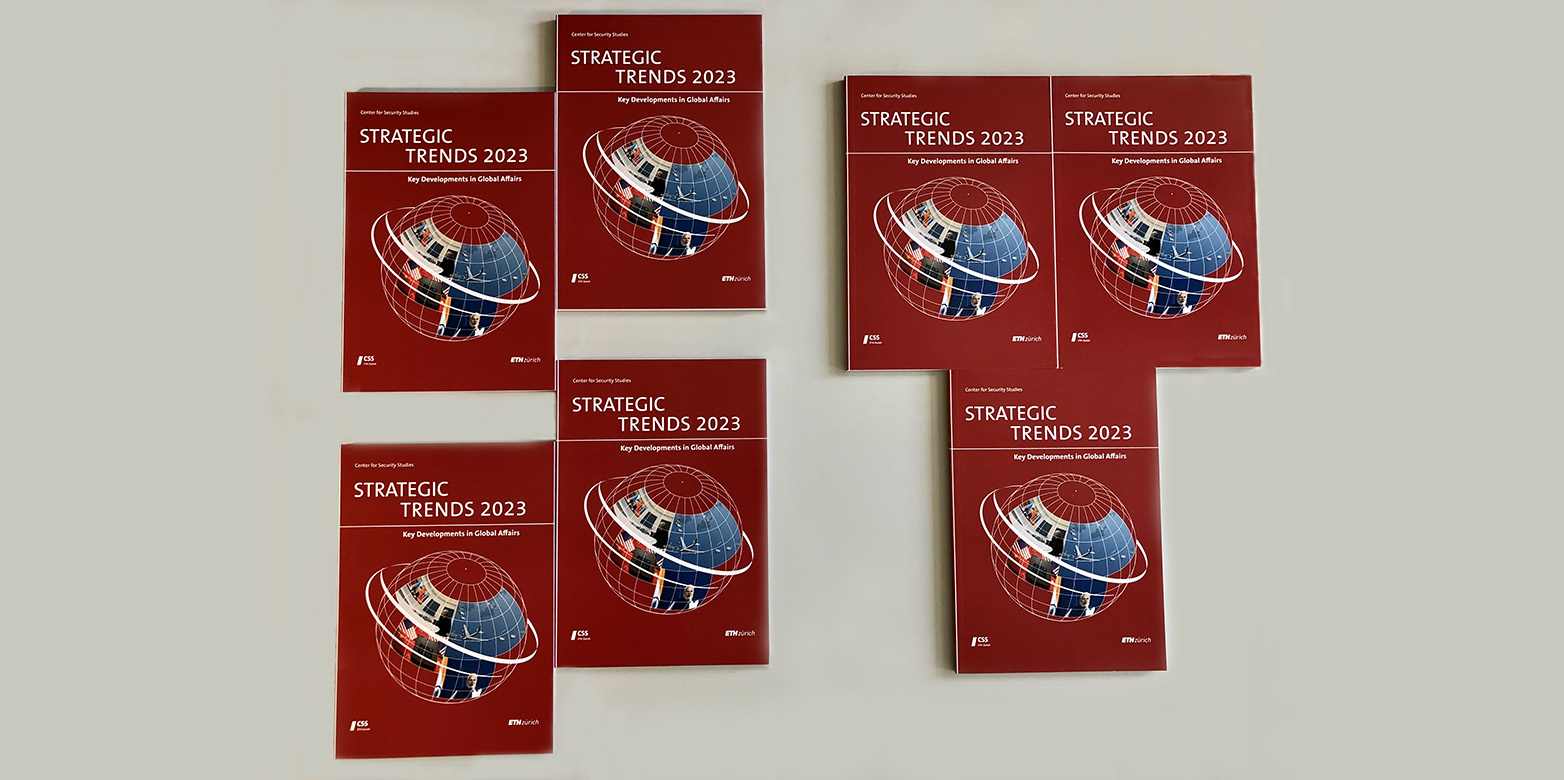Strategic Trends 2023: Order and Alignment
Strategic Trends offers an annual analysis of major developments in world affairs, with a primary focus on international security. Providing interpretations of key trends rather than a comprehensive survey of events, this publication will appeal to analysts, policymakers, academics, the media, and the interested public alike. This year, Strategic Trends features chapters on China-Russia relations and world order, US tech alliances, extended nuclear deterrence, and India’s foreign policy.

ETH Tagung «Weltpolitische Lage 2023»
external page NZZ Article on Chapter 2 (in German)
external page NZZ Article on Chapter 4 (in German)
Recent trends in international relations, especially the intensification of great-power rivalry, have the potential to create far-reaching changes in world order. Russia’s war in Ukraine, which at the time of writing appeared likely to continue for a prolonged period, challenges the norms of state sovereignty and non-aggression. China’s increasingly aggressive military behavior around Taiwan raises concerns about a potential invasion in the coming years, as well as the broader challenge to both the regional and global orders that China might pose. Together, China and Russia seek to reshape the world order by reducing the power of the United States and building their own spheres of influence.
Strategic Trends 2023 focus on a changing world order and the formation of new alignments. The four chapters are about China-Russia relations and world order, US tech alliances, extended nuclear deterrence, and India’s foreign policy.
Chapter 1: China, Russia, and the Future of World Order
By Brian G. Carlson
China and Russia pose illiberal challenges to world order, most visibly at present in Russia’s aggression against Ukraine and in the threat that China poses to Taiwan. Shared views on world order, particularly the desire to reduce US power and to resist universal claims for democracy and human rights, are an important driver of the China-Russia partnership. Despite recent setbacks, the concept of a liberal international order remains valuable in addressing the challenges that China and Russia pose.
Chapter 2: Silicon Curtain: America’s Quest for Allied Export Controls against China
By Sophie-Charlotte Fischer
Export controls are playing an increasingly important role in the US government’s efforts to deny China access to critical technologies, and their far-reaching effects have already begun to reshape the global technology landscape. However, the Biden administration’s recently imposed export controls on China’s semiconductor sector have highlighted the challenges the US faces in securing the buy-in from allies that it needs to ensure their long-term effectiveness. The episode has also underscored some critical issues that allies have to confront in dealing with Washington as it pursues its sharpened technological goals vis-à-vis Beijing.
Chapter 3: Alliances and Extended Nuclear Deterrence in Europe and Asia
By Névine Schepers
Compounding and simultaneous strategic developments in Europe and Asia are placing increasing pressure on US-led alliance systems in both regions to adapt to a heightened nuclear risk environment. They also highlight the role of extended nuclear deterrence in alliance relationships and the deterrence and assurance challenges for the United States as a security provider confronted with the near-term prospect of facing two major nuclear powers – Russia and China – at the same time in addition to threats posed by North Korea.
Chapter 4: How India Navigates a World in Transition
By Boas Lieberherr
India’s foreign policy seeks to avoid overdependence on any country while leveraging diverse partnerships in a quest for security and status as an emerging major power. The current international balance of power and closer cooperation with the US and its allies increase India’s global influence, while significant differences about ideas of order remain. At the national and regional levels, India faces major challenges. Its first foreign policy objective – and limitation – remains economic and social development.